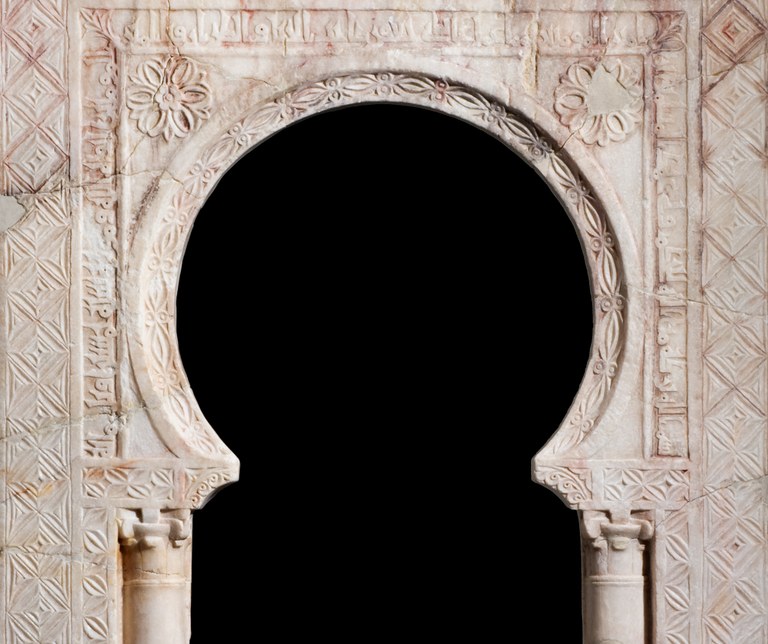Madinat al-Zahra: The Radiant Capital of Islamic Spain
 Decorative arch with epigraph on the alfiz. The inscription names al-Ḥakam as heir and the fatà and mawlà Ğa'far as director. 961–2/350 H. Madīnat al-Zahrāʾ. Marble. MMaZ: 25428 © Conjunto Arqueológico Madinat al-Zahra.
Decorative arch with epigraph on the alfiz. The inscription names al-Ḥakam as heir and the fatà and mawlà Ğa'far as director. 961–2/350 H. Madīnat al-Zahrāʾ. Marble. MMaZ: 25428 © Conjunto Arqueológico Madinat al-Zahra.
Madinat al-Zahra: The Radiant Capital of Islamic Spain
(October 30th 2024-March 2nd 2025)
Madinat al-Zahra: The Radiant Capital of Islamic Spain, presented the little-told story of the Islamic kingdoms of Europe. The exhibition explored how the Umayyad family, ruling from their capital Madinat al-Zahra (936–1013 CE) in Cordoba, Spain, transformed the Iberian Peninsula into a bustling hub for scholars, artists, and diplomats from Baghdad to Byzantium. The Umayyads desire to express their power, or al-mulk, led them to forge a thriving cosmopolitan society with international tastes in luxury goods, unique architectural styles that blended Islamic and Classical traditions, and a scientific curiosity of the universe. The significant cultural accomplishments of the Umayyads fashioned Madinat al-Zahra into one of the gleaming jewels of the early Medieval world.
Madinat al-Zahra was curated by Antonio Vallejo Triano, director of the Conjunto Arqueológico Madinat al-Zahra, and Eduardo Manzano Moreno, Research Professor at the Consejo Superior de Investigaciones Científicas in Madrid. The loans were generously granted from four Spanish museums (Conjunto Arqueológico Madinat al-Zahra, Museo Arqueológico y Etnológico de Córdoba, Museo de Jaén, and Museo Arqueológico Municipal de Jerez de la Frontera) and four international institutions (The Metropolitan Museum of Art, the Brooklyn Museum, the American Numismatic Society, and the Hispanic Society Museum & Library).